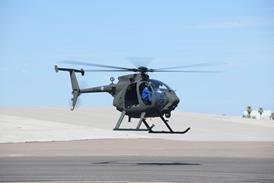Ian Sheppard/LONDON
A new detection device which could allow civil pilots using head-up displays to "see" invisible atmospheric hazards such as wake vortices, windshear and clear-air turbulence (CAT)at long range is being developed by a European consortium led by Sextant Avionique of France.
The European Commission (EC)-backed Multifunction Future Laser Atmospheric Measuring Equipment (M-FLAME) project aims to evaluate an airborne remote-sensing LIDAR (Light Detecting and Ranging) Doppler anemometer, produced by GEC-Marconi Avionics, to allow pilots to take timely evasive action in all phases of flight.
Hubert Combe, Sextant Avionique senior project engineer, says that the concept is "-very closed-loop, excluding the ground [segment]". Combe says that the range of the proposed system would be 1-2km (0.55-1.1nm) for wake vortices and 4-5km for windshear, although a more powerful laser would be needed to give the 10km range required for detection of CAT. "It's not so easy to get that power on board," Combe adds.
He proposes audible warnings at 30s and 15s, and says that integration with weather-radar displays and other graphical hazard- warning systems under development, such as enhanced ground proximity warning systems, will be feasible.
The potential for reducing separation distances on approach would seem great, but Combe cautions that this is not a priority as the greater possibility of a go-around would "-disturb the functioning of airports". He adds that the system aims only to "-guarantee the level of safety required".
Feasibility studies into using a two-micron-wavelength LIDAR for the device were completed in late 1997, while flight testing on the DLR German Research Institute's Falcon 20, which has an optical "blister" behind the nosewheel, are scheduled to begin in Toulouse in early 1999.
Source: Flight International























